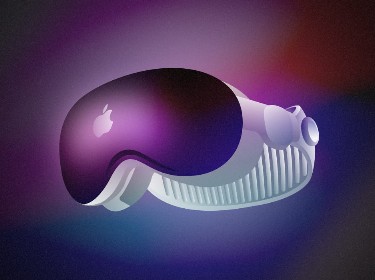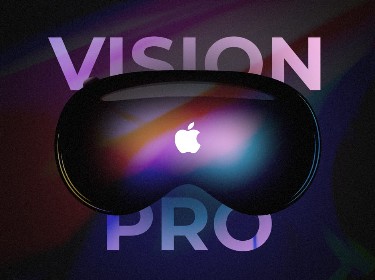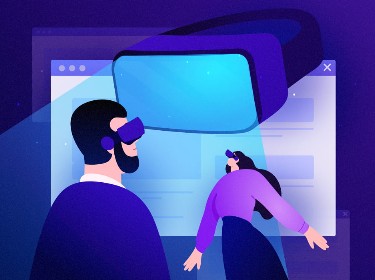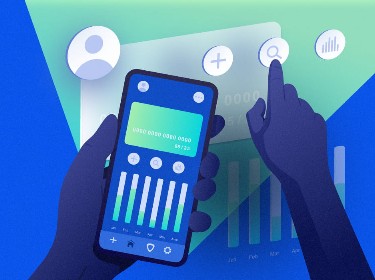Augmented reality’s possibilities leave no one indifferent, with manufacturers being no exception. Wine manufactures are turning to AR to promote their products by providing users with engaging and interactive content that involves history, cultural ties and real life stories.
Twenty years ago, AR applications would have seemed like a fantasy. Today these apps have made their way into many domains such as the gaming industry, entertainment, businesses and education. AR applications provide a blend of virtual and real world, where physical objects are complemented by computer generated synthetic information to enhance the perception of the physical environment.
Unique and innovative, AR applications are being used by businesses to attract customers, increase sales and maximize profits. One enterprise that is surprisingly benefitting from this technology is the wine industry! Wine makers are adopting this technology to meet the demands of a competitive market and sell their products in a creative fashion.
Interestingly, wine is one beverage that has history, culture, romance, art and poetry all entangled together. People gather to enjoy a glass of wine not just for its flavor but also to relish the stories that accompany it. More and more people like to know the historical perspective, the tradition and the stories connected with it.
This is where AR has made its mark! AR technology has enabled wine makers to narrate these chronicles in an engaging and interactive manner to the consumers, making it an invaluable tool for the wine industry.
What is Augmented Reality?
![]()
Augmented reality (AR) is the technology that adds a virtual layer to a live camera stream of the physical world, creating a blend of both physical and virtual worlds in an ideal manner. AR applications are hands-on systems that provide an enriched and enhanced experience of the real world to the user.
These systems supplement the users experience by integrating artificially generated perceptual information from different modalities including vision, touch, audio, taste and smell. Special hardware with sensory input and output channels are required for an AR app.
Smartphones and mobile devices are the ideal platform for deploying AR apps as these devices have inbuilt cameras and sensors such as accelerometers or GPS. Examples of commonly used AR apps are overlaying computer generated furniture images in the picture of an empty living room, or adding virtual eyeglasses to the picture of a face, etc.
It should be noted that AR apps are different from Virtual Reality (VR) apps, as virtual reality gives the impression of completely new virtual surroundings, which may not be connected to the physical environment of the user.
AR for the Wine Industry
More and more companies in the wine industry are embracing AR technology to target clients and to make their label alluring. When customers buy wine at retail outlets, they have many brands to choose from. Shoppers these days like to research and know more about the label they want to buy.
Using AR technology, wine companies are now enabling customers to point their smartphone at the wine bottle and in turn the app installed on their phone gives detailed information about the brand quality. The information comes in all sorts of flavors – from true stories, historical facts and poetry to various facts about the wine label.
Our AR development company collected some of the notable apps and their functionality. Let’s take a closer look at each.
Living Wine Labels App by 19 Crimes: Real Life Stories from History
The 19 Crimes wine label was launched by Treasury Wine Estates, an Australian company. It was named after the British prisoners who were sent to Australia after they committed a crime listed in a set of 19 felonies. Treasury Wine Estates was the first among wine companies to introduce AR technology in its apps to market their merchandise. Their success in marketing the 19 Crimes wine label motivated other wine makers to follow suit and create similar AR apps.
Wine brands with the “living wine label” have unique stories associated with them. The Living Wine Label App is easy to install and use. Users simply place their mobile device in front of the wine bottle, and watch it come to life.
The characters on the wine bottle narrate the story in an interesting and entertaining manner. It motivates the consumers to buy more labels of the same brand to have a personal collection of interesting stories narrated via the interactive AR app. This successful app has been downloaded more than a million times! Consequently, the brand’ s revenue increased by 104% in the very first year of the app’s launch.
Walking Dead Wine App: Chatting bottles
After the success of 19 Crimes wine brand, Treasury Wine Estates, introduced some more wine brands including the Walking Dead Wine App. The AR app of Walking Dead Wine label reveals the story of zombies and a zombie hunter in a fun and entertaining manner. It has some additional cool features too. When two bottles are placed side by side, they start interacting with each other. This fun and innovative feature induces customers to buy a second bottle of Walking Dead wine label.
Embrazen Wine Brand: Celebrating Women
Wine companies using AR are now initiating more and more unique ideas to showcase and promote their products. Embrazen Wine Brand was launched at the same time as the #Metoo movement, which went viral globally. Keeping itself inline with the current social trends, this wine brand’s AR app includes stories about outstanding women in history; women who were journalists, artists, engineers and had an impact on the society.
Winerytale: For all Wineries
Winerytale app initially targeted to provide AR technology to every wine producer in Australia to gain advantage over overseas wine labels. The AR app was provided free of charge. Now, winemakers from other countries in Europe and North America have also shown interest in the app. Winerytale, provides fascinating and interactive content to its users explaining the story behind the wine label. Wine producers are reporting increase in profit and sales; making this technology an integral part of their brand gets them ahead of others. In 2021, Winerytale set up a storytelling campaign – the wine lovers are now provided with a history behind the bottles of wine. The stories feature people who made the wine, region details, and the brand’s history.
Winerytale is now developing an AR-based assistant to whom a customer can address wine-related questions.
SnapPress by ARwinelabels: Customized Content
SnapPress app developed by ARwinelabels provides a whole variety of options to wine sellers to link customized content to their wine label. The information may be related to vineyards, cellars, wineries, chateaux or it could be stories related to people and the history involved. They also suggest adding food and wine pairings and recipe tips, making it an ideal app to provide a transformed customer experience.
The Owl and Dust Devil App: Interactive Content
The Owl and Dust Devil App relates a story to the user in an interactive and interesting manner. They have the option to move an owl around or swirl up the bottle to create a dust devil in the form of a vortex. Users are also entertained with the fictional story behind the owl and the dust devil.
Rabble Wine Company App: Mythology and Apocalyptic Events
The Rabble wine company is a wine producer in California. Its app features stories from mythologies and visuals of cities being destroyed due to apocalyptic events.
How These AR Wine Apps Work
![]()
An AR app operates in the following four basic steps:
- 1. Image input. real world digital content is captured using input devices such as the smartphone camera. For wine labels, one option is to scan the barcode. However, many apps enable customers to just take a snapshot of the bottle’s label.
- 2. Image processing and computer vision. The input image is aligned and oriented using image processing algorithms. It may need some additional colors or lighting adjustments. Next a computer vision module is triggered, which may use a template matching or machine learning module to interpret the image of the physical world. In case of wine, the brand and type have to be recognized. Additionally, the bottle label may have some characters picturized on it which would be identified by this module.
- 3. Synthetic content generation: Generate or retrieve the digital synthetic content targeted for the user based on the recognized input image. In the case of the wine industry, various apps react in different ways to the input images. Some may bring the characters to life and start narrating their stories or some may initiate choreographed images of dancers or relate poetic content. In many instances the synthetic content is already stored on a web server or local machine and is retrieved in real time.
- 4. Rendering Phase. This stage has synthetic content superimposed with the image of the real world and presented to the user.
Challenges in AR Application for the Wine Industry
![]()
The challenges faced by the wine industry employing AR are typically technological challenges that are faced by any AR platform. For example, when the images are captured, they vary depending upon the camera quality, orientation and lighting conditions. It is not possible to know these parameters in advance during the development phase.
The image processing and machine learning algorithms, therefore, have to be robust to cater for all types of variations in images. Training with a large number of real or synthetic images requires reliable software.
Speed is another issue when rendering an image. Typically mobile phone cameras stream 30 images per second, which means that the software only has a few milliseconds to carry out all the phases of the AR algorithms. Failing to do so, may result in a lag in displaying the rendered images, which may not have an aesthetic appeal to the end user.
Apart from technological difficulties, the wine industry brands face the challenge of generating different and unique content to survive the competition. The content has to be engaging and attractive, being persuasive enough for the customer to buy the brand’s products.
Now that so many wine sellers are incorporating wine stories into their apps, It can be quite challenging to come up with novel content to provide the consumers with an immersive experience. Turning to an expert AR/VR development company with an inhouse 3D design team might be the best solution.
Future Innovations of AR in Wine Industry
AR is the future for not just wine makers but also for other manufacturers and businesses. The next move for wine brands could possibly be to incorporate interactive games powered by AR. These games would need to employ AI to react to various user moves. Another possibility for the future is to exploit GPS sensors in the mobile devices to employ location based data and generate synthetic content based upon the user’s local coordinates, the culture and environment of those locations.




